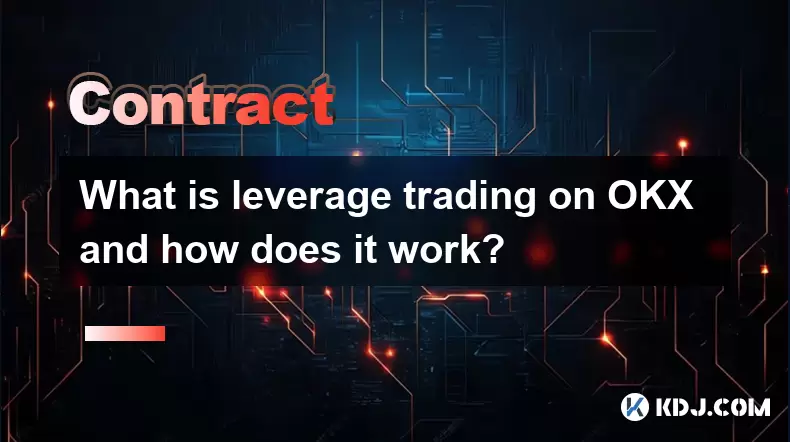-
 Bitcoin
Bitcoin $119900
0.94% -
 Ethereum
Ethereum $4633
9.35% -
 XRP
XRP $3.254
3.60% -
 Tether USDt
Tether USDt $0.9998
-0.04% -
 BNB
BNB $837.0
3.48% -
 Solana
Solana $194.3
10.87% -
 USDC
USDC $0.9998
-0.02% -
 Dogecoin
Dogecoin $0.2370
5.91% -
 TRON
TRON $0.3528
1.79% -
 Cardano
Cardano $0.8460
9.05% -
 Chainlink
Chainlink $23.61
12.06% -
 Hyperliquid
Hyperliquid $44.91
3.99% -
 Stellar
Stellar $0.4475
2.93% -
 Sui
Sui $3.899
5.78% -
 Bitcoin Cash
Bitcoin Cash $620.7
6.74% -
 Hedera
Hedera $0.2602
4.59% -
 Ethena USDe
Ethena USDe $1.000
-0.03% -
 Avalanche
Avalanche $24.84
8.52% -
 Litecoin
Litecoin $131.0
9.17% -
 Toncoin
Toncoin $3.509
3.47% -
 UNUS SED LEO
UNUS SED LEO $9.170
2.15% -
 Shiba Inu
Shiba Inu $0.00001360
4.82% -
 Uniswap
Uniswap $11.66
5.28% -
 Polkadot
Polkadot $4.180
7.93% -
 Ethena
Ethena $0.8242
2.31% -
 Dai
Dai $0.9998
-0.04% -
 Cronos
Cronos $0.1630
-3.04% -
 Pepe
Pepe $0.00001224
9.07% -
 Bitget Token
Bitget Token $4.464
1.16% -
 Aave
Aave $321.9
9.17%
What is leverage trading on OKX and how does it work?
OKX leverage trading lets users amplify positions via margin, supporting up to 125x on perpetual contracts, with risk controls like liquidation monitoring and funding rate mechanisms.
Aug 12, 2025 at 07:50 pm

Understanding Leverage Trading on OKX
Leverage trading on OKX is a method that allows traders to amplify their trading positions by borrowing funds from the platform. This enables users to control a larger position size than their actual capital would permit. For instance, with 5x leverage, a trader can control a position worth five times their initial investment. This mechanism is particularly appealing in the volatile cryptocurrency market, where even small price movements can lead to significant gains—or losses. OKX supports leverage trading across various products, including spot margin, perpetual contracts, and futures contracts.
The core idea behind leverage trading is margin. Traders deposit a certain amount of funds, known as initial margin, which serves as collateral for the borrowed amount. OKX calculates the required margin based on the selected leverage and the size of the position. If the market moves against the trader, the platform may issue a margin call or automatically liquidate the position if the margin falls below the maintenance threshold.
Different Types of Leverage Products on OKX
OKX offers multiple leverage-based trading instruments, each with distinct characteristics:
Cross Margin and Isolated Margin Modes: In cross margin, the entire account balance acts as collateral for open positions, reducing the risk of liquidation. In isolated margin, only a specific amount of margin is allocated to a position, limiting both potential losses and gains to that amount.
Perpetual Contracts: These are derivative contracts with no expiration date, allowing traders to hold positions indefinitely. OKX supports leverage up to 125x on certain perpetual contracts, such as BTC/USDT. Funding rates are exchanged periodically between long and short positions to keep the contract price aligned with the spot price.
Quarterly Futures: These are futures contracts that expire on a set date (e.g., the last Friday of the quarter). Leverage is typically lower than perpetuals, but they are useful for hedging or taking directional bets on future price levels.
Spot Margin Trading: This allows users to borrow assets to buy more of a cryptocurrency than their wallet balance allows. For example, with 3x leverage, a user can borrow 2 BTC to add to their 1 BTC to trade 3 BTC total.
How to Start Leverage Trading on OKX: Step-by-Step Setup
To begin leverage trading on OKX, follow these steps carefully:
Log in to your OKX account and complete KYC verification if not already done, as higher leverage tiers require identity verification.
Navigate to the Trade section and select Futures or Margin depending on the product you wish to trade.
Choose the trading pair (e.g., BTC-USDT-SWAP for perpetual contracts).
Switch between Cross and Isolated margin mode using the toggle button near the leverage selector.
Set your desired leverage level using the slider or input field. For example, select 10x for a balanced risk-reward ratio.
Enter the contract size or amount you wish to trade in the order panel.
Choose your order type (Market, Limit, Stop-Market, etc.) and confirm the trade.
Ensure your available balance in the designated margin wallet (e.g., Futures Wallet) is sufficient before placing the order.
Risk Management and Liquidation Mechanics
Leverage magnifies both gains and losses, making risk management essential. OKX employs a liquidation engine that monitors positions in real time. When the margin ratio drops to the maintenance margin level, the position is at risk of liquidation.
The liquidation price is the market price at which the position will be automatically closed to prevent further losses. This price is displayed on the trading interface and updates dynamically based on market conditions.
To avoid liquidation:
- Use stop-loss orders to limit downside exposure.
- Monitor your unrealized P&L and margin ratio continuously.
- Avoid using maximum leverage unless you have a high-risk tolerance and strong market conviction.
- Consider using partial close functionality to reduce position size and free up margin.
OKX also provides a countdown liquidation feature in extreme volatility, giving traders a brief window to add margin before forced closure.
Funding Rates and Holding Costs in Perpetual Contracts
When trading perpetual contracts on OKX, traders must account for funding rates. These are periodic payments exchanged between long and short positions to tether the contract price to the underlying spot price.
- If the funding rate is positive, long position holders pay shorts.
- If the funding rate is negative, short holders pay longs.
Funding is settled every 8 hours (at 00:00, 08:00, and 16:00 UTC). The rate is determined by the difference between the perpetual contract price and the index price, as well as market demand.
Traders can view the current funding rate on the contract’s info panel. High funding rates may indicate strong bullish or bearish sentiment and can significantly impact holding costs over time.
FAQs About Leverage Trading on OKX
Q: How do I transfer funds to my Futures Wallet on OKX?
A: Go to the Assets section, click Transfer, select the source wallet (e.g., Spot Wallet), choose Futures Wallet as the destination, enter the amount, and confirm. The transfer is instant and free.
Q: Can I change leverage after opening a position?
A: Yes. On the trading interface, locate the leverage display next to your open position. Click it, enter a new leverage value, and confirm. Note that changing leverage adjusts the margin and may affect your liquidation price.
Q: What happens when my position is liquidated?
A: OKX automatically closes the position at the prevailing market price. A liquidation fee is charged, typically equal to the nominal value of the position times the fee rate (e.g., 0.5%). The remaining margin, if any, is returned to your wallet.
Q: Is leverage trading available for all cryptocurrencies on OKX?
A: No. Only supported trading pairs offer leverage. These include major assets like BTC, ETH, SOL, and USDT pairs. Check the Futures or Margin section to see available leveraged pairs. New pairs are added based on trading volume and demand.
Disclaimer:info@kdj.com
The information provided is not trading advice. kdj.com does not assume any responsibility for any investments made based on the information provided in this article. Cryptocurrencies are highly volatile and it is highly recommended that you invest with caution after thorough research!
If you believe that the content used on this website infringes your copyright, please contact us immediately (info@kdj.com) and we will delete it promptly.
- Unich's OTC Exchange: Surging with $1.2B Volume – What's the Hype?
- 2025-08-13 02:50:11
- MoonBull's Explosive Moves: Your Crypto Whitelist Ticket to Ride!
- 2025-08-13 02:30:11
- MAGACOIN Finance: Don't Miss the Presale Bonus!
- 2025-08-13 02:30:11
- Trump's Crypto Kingdom: $2.4 Billion and Counting
- 2025-08-13 02:50:11
- Solana, LSTs, and SEC Approval: A New Dawn for Crypto?
- 2025-08-13 02:55:12
- Bitcoin's Profit Surge: Unpacking the BTC Value Boom
- 2025-08-13 02:55:12
Related knowledge

Is it possible to adjust the leverage on an open position on KuCoin?
Aug 09,2025 at 08:21pm
Understanding Leverage in KuCoin Futures TradingLeverage in KuCoin Futures allows traders to amplify their exposure to price movements by borrowing fu...

What cryptocurrencies are supported as collateral on KuCoin Futures?
Aug 11,2025 at 04:21am
Overview of KuCoin Futures and Collateral MechanismKuCoin Futures is a derivatives trading platform that allows users to trade perpetual and delivery ...

What is the difference between realized and unrealized PNL on KuCoin?
Aug 09,2025 at 01:49am
Understanding Realized and Unrealized PNL on KuCoinWhen trading on KuCoin, especially in futures and perpetual contracts, understanding the distinctio...

How does KuCoin Futures compare against Binance Futures in terms of features?
Aug 09,2025 at 03:22am
Trading Interface and User ExperienceThe trading interface is a critical component when comparing KuCoin Futures and Binance Futures, as it directly i...

How do funding fees on KuCoin Futures affect my overall profit?
Aug 09,2025 at 08:22am
Understanding Funding Fees on KuCoin FuturesFunding fees on KuCoin Futures are periodic payments exchanged between long and short position holders to ...

What is the distinction between mark price and last price on KuCoin?
Aug 08,2025 at 01:58pm
Understanding the Basics of Price in Cryptocurrency TradingIn cryptocurrency exchanges like KuCoin, two key price indicators frequently appear on trad...

Is it possible to adjust the leverage on an open position on KuCoin?
Aug 09,2025 at 08:21pm
Understanding Leverage in KuCoin Futures TradingLeverage in KuCoin Futures allows traders to amplify their exposure to price movements by borrowing fu...

What cryptocurrencies are supported as collateral on KuCoin Futures?
Aug 11,2025 at 04:21am
Overview of KuCoin Futures and Collateral MechanismKuCoin Futures is a derivatives trading platform that allows users to trade perpetual and delivery ...

What is the difference between realized and unrealized PNL on KuCoin?
Aug 09,2025 at 01:49am
Understanding Realized and Unrealized PNL on KuCoinWhen trading on KuCoin, especially in futures and perpetual contracts, understanding the distinctio...

How does KuCoin Futures compare against Binance Futures in terms of features?
Aug 09,2025 at 03:22am
Trading Interface and User ExperienceThe trading interface is a critical component when comparing KuCoin Futures and Binance Futures, as it directly i...

How do funding fees on KuCoin Futures affect my overall profit?
Aug 09,2025 at 08:22am
Understanding Funding Fees on KuCoin FuturesFunding fees on KuCoin Futures are periodic payments exchanged between long and short position holders to ...

What is the distinction between mark price and last price on KuCoin?
Aug 08,2025 at 01:58pm
Understanding the Basics of Price in Cryptocurrency TradingIn cryptocurrency exchanges like KuCoin, two key price indicators frequently appear on trad...
See all articles

























































































